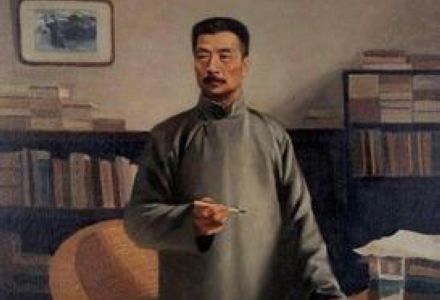求lou reed英文简介
的有关信息介绍如下:
Lewis Allan Reed[1] (born March 2, 1942) is an American rock singer-songwriter and guitarist. He first came to prominence as the guitarist and principal singer-songwriter of The Velvet Underground (1965-1973). The band gained little mainstream attention during their career, but became one of the most influential of their era.[2] As the Velvets’ principal songwriter, Reed wrote about subjects of personal experience that rarely had been examined in rock and roll, including bondage and S&M ("Venus in Furs"), transvestites ("Sister Ray" and "Candy Says"), drug culture ("Heroin" and "I'm Waiting for the Man"), and transsexuals undergoing surgery ("Lady Godiva's Operation"). As a guitarist, he was a pioneer in the use of distortion, high volume feedback, and nonstandard tunings.Reed began a long and eclectic solo career in 1971. He had a hit the following year with "Walk on the Wild Side", though for more than a decade Reed seemed to wilfully evade the mainstream commercial success its chart status offered him.[3] One of rock's most volatile personalities, Reed's work as a solo artist has frustrated critics wishing for a return of The Velvet Underground. The most notable example is 1975's infamous double LP of recorded feedback loops, Metal Machine Music, upon which Reed later commented: "No one is supposed to be able to do a thing like that and survive." By the late 1980s, however, Reed had won wide recognition as an elder statesman of rock.Early lifeLou Reed was born into a Jewish family in 1942 at Beth El Hospital in Brooklyn and grew up in Freeport, New York. Contrary to some sources, his birth name was Lewis Allan Reed, not Louis Firbanks[4] (that name was a joke started by Lester Bangs for Creem magazine). He developed an early interest in rock and roll and rhythm and blues, and during high school played in a number of bands. His first recording was as a member of a doo wop-style group called The Shades.Reed received electroconvulsive therapy in his teen years in response to his homosexual behavior; in his dark 1974 song, "Kill Your Sons", he revisited the experience. In an interview, Reed said of the experience:“ They put the thing down your throat so you don't swallow your tongue, and they put electrodes on your head. That's what was recommended in Rockland County [1] to discourage homosexual feelings. The effect is that you lose your memory and become a vegetable. You can't read a book because you get to page seventeen and have to go right back to page one again.[5] ” Reed began attending Syracuse University[6], where he hosted a late-night radio program on WAER called "Excursions On A Wobbly Rail" (titled after a song by pianist Cecil Taylor[7]), which typically featured doo wop, rhythm and blues and jazz, particularly the free jazz developed in the mid-1950s. Many of Reed's innovative guitar techniques were inspired by jazz saxophonists, notably Ornette Coleman. While Reed dropped out before graduating, he was later granted an honorary degree in English.Noted poet Delmore Schwartz, then in the last years of his life, taught at Syracuse and befriended Reed, who in 1967 dedicated to Schwartz the song "European Son," included in the debut "The Velvet Underground and Nico" album. [8] Later, in 1982, Reed recorded "My House", as a tribute to his late mentor: "My Dedalus to your Bloom was such a perfect wit." Schwartz's influence on the aspiring writer seems to have been through encouragement, but Reed also credits him for insisting on use of colloquial language in his writing. He said later his goals as a writer were "to bring the sensitivities of the novel to rock music" or to write the Great American Novel in a record album[9].[edit] Career[edit] Staff songwriter at Pickwick RecordsIn 1963, Reed moved to New York City, and began working as an in-house songwriter for Pickwick Records. In 1964, he scored a minor hit with the single "The Ostrich", a parodic novelty song of popular "dance songs" such as "The Twist" that included lines such as "put your head on the floor and have somebody step on it." His employers had felt the song had hit record potential, and arranged for a band to be assembled around Reed to promote the recording. The ad hoc group, called The Primitives, included Welsh musician John Cale who had recently moved to New York to study music and was playing viola in composer La Monte Young's Theater of Eternal Music along with Tony Conrad. Cale and Conrad were both surprised to find that for "The Ostrich" Reed tuned each string of his guitar to the same note. This technique created a drone effect similar to their experimentation in Young's avant garde ensemble. Disappointed with Reed's performance, Cale was nevertheless impressed by Reed's early repertoire (including "Heroin"), and a partnership began to evolve.[edit] The Velvet UndergroundMain article: The Velvet UndergroundReed and Cale lived together on the Lower East Side, and, adding Reed's college acquaintances guitarist Sterling Morrison and drummer Maureen Tucker to the group, they formed The Velvet Underground. Though internally unstable (Cale left in 1968; Reed in 1970) and never commercially viable, the band has a long-standing reputation as one of the most influential underground bands in rock history.[10]The group caught the attention of Andy Warhol, who raised their profile immeasurably, if not improving their immediate fortunes. One of Warhol's first contributions to the band's success was securing them a steady spot as the house band at Max's Kansas City.[11] Warhol's associates inspired many of Reed's songs as he fell into a thriving, multifaceted artistic scene. Reed rarely gives an interview without paying homage to Warhol as a mentor figure. Still, conflict emerged when Warhol had the idea for the group to take on as "chanteuse" the European former model Nico. Reed and the others registered their objection by titling their debut album The Velvet Underground and Nico. Despite his initial resistance, Reed wrote several songs for Nico to sing, and the two were briefly lovers (as were Nico and Cale later). At the time, this album reached #131 on the charts.Today, however, it is considered one of the most influential rock albums ever produced, influencing glam rock, punk, post punk, gothic rock, shoegazing and more. Rolling Stone has it listed as the 13th best rock album of all time. Brian Eno once famously stated that although few people bought the album, most of those who did were inspired to form their own band.[12]By the time the band recorded White Light/White Heat, Nico was dropped and Warhol fired, both against the wishes of Cale. Warhol's replacement as manager, Steve Sesnick, convinced Reed to drive Cale out of the band. Morrison and Tucker were discomfited by Reed's tactics but continued with the group. Cale's replacement was Doug Yule, whom Reed would often facetiously introduce as his younger brother. The group now took on a more pop-oriented sound and acted more as a vehicle for Reed to develop his songwriting craft. The group released two more albums with this line up: 1969's The Velvet Underground and 1970's Loaded. The latter included two of the group's most commercially successful songs, "Rock and Roll" and "Sweet Jane". Reed left the Velvet Underground in August 1970; the band disintegrated as core members Sterling Morrison and Maureen Tucker departed in August 1971 and early 1972, respectively. Doug Yule continued until early 1973 and released one more studio album, Squeeze, under the Velvet Underground name.After the band's move to Atlantic's Cotillion label, their new manager pushed Reed to change the subject matter of his songs to lighter topics in hopes of resulting in more accessible and mainstream music. The band's album Loaded had taken more time to record than the previous three albums together and was written and produced to be "loaded with hits", but had not broken the band through to a wider audience. Reed briefly retired to his parents' home on Long Island.



